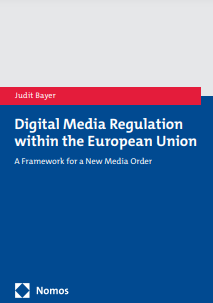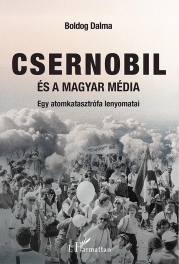Keyword – content analysis
Zakinszky Toma, Viktória:
Zakinszky Toma, Viktória:
“According to press information.”
Migration from the Middle East, North Africa and Asia and the migration crisis got into the focus of media reporting in Central and South-East Europe after the spring of 2015 when the largest wave of migrants arrived into the region, and the topic of migration has remained a major issue in the media all around Europe until to date. It has been more or less intense, politicised, biased, over-simplified or overtly full of disinformation. In most cases, this is explained by pure ignorance, but a deliberate use of lies can also be detected. Sometimes journalists/reporters were unfamiliar with the correct terms and phrases, while sometimes there were no appropriate definitions. Using a comparative method, this paper offers a discourse analysis of Hungarian and Serbian national and regional media. These two countries are both on the ‘West-Balkan route,’ both are transit countries, not destination for migrants. However, they are in different political positions: Hungary being an EU member state, and Serbia wishing to become one. The focus of this research is on the comparative analysis of media discourses between 2016 and 2019 in Hungary and Serbia.
Keywords: asylum seekers, content analysis, crisis, discourse, Hungary, media, migrants, refugees, Serbia, Vojvodina
“According to press information.”
Médiakutató Autumn-Winter 2021 pp. 79-87
Bódi, Jenő – Polyák, Gábor – Urbán, Ágnes:
Bódi, Jenő – Polyák, Gábor – Urbán, Ágnes:
The changing concept of fake news in public service news
In Hungary in 2020, after the emergence of the Covid-19 pandemic, government communication began to accuse critical media of spreading fake news. This typical tool of populist politics has taken on a new colour in Hungary: fake news accusations have also been used against opposition politicians. This analysis looks into content on fake news published over the past decade on Hirado.hu, the news site of the Hungarian public service media. It does not study fake news items that may be published there, but looks into what the concept 26 Bódi Jenő–Polyák Gábor–Urbán Ágnes means in the public discourse on the basis of the articles on Hirado.hu, and how the meaning of the term has evolved over time; for example, whether populist fake news accusations targeting the media and the domestic opposition appeared before 2020.
Keywords: content analysis, fake news, MTVA, news media, populism, public service media
The changing concept of fake news in public service news
Médiakutató Spring 2022 pp. 7-26
Német, Szilvi:
Német, Szilvi:
”I can’t even fathom what a liberal fact-checker is”
This paper studies Hungary’s first dedicated fact-checking initiative, Lakmusz, in order to assess the public’s reactions to this project. It is based on a quantitative and content analysis of readers’ comments (N = 2,546) on two Facebook pages – those of Lakmusz and of 444.hu – where fact-checking articles by Lakmusz were posted simultaneously. Its findings suggest that the two audiences commonly challenged journalists’ verdicts on epistemological grounds; however, politicised views on their practices were more pronounced in the comment section of the fact-checking portal. Our findings also indicate that the acceptance of the genre improves when fact-checks are an integral part of the mainstream news agenda. On the downside, fact-checking articles also seem to provoke polarised political attitudes among news commenters being “in the know.”
Keywords: content analysis, fact-checking, independence, journalistic bias, mainstream media, readers’ comments
”I can’t even fathom what a liberal fact-checker is”
Médiakutató Autumn 2023 pp. 79-93 https://doi.org/10.55395/MK.2023.3.9
Tóth, Tamás – Major, Zsolt Balázs:
Tóth, Tamás – Major, Zsolt Balázs:
Explicit and implicit populism
This paper presents content analysis methods designed to detect explicit and implicit populism. It outlines their theoretical embeddedness, practical applications, and methodological usefulness. It highlights that the above concepts consider populism a political communication style. Through the notions of explicit and implicit populism, the detection of articulated and latent dichotomies can be achieved in content analyses. This theorydriven paper also reviews relevant findings from previous empirical research and suggests ways of embedding the concepts of explicit and implicit populism in international comparative research.
Keywords: explicit populism, ideology, implicit populism, political communication, content analysis
Explicit and implicit populism
Médiakutató Summer 2022 pp. 37-46



